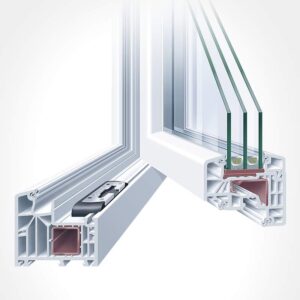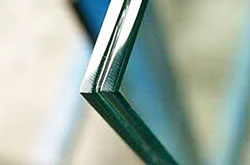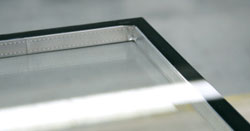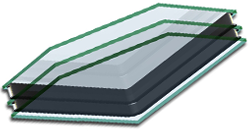Horns, heavy traffic, bars, barking, sirens,… these are the dreaded sounds of life in a big city. They invade our daily lives during work, social life, traffic and even during our well-deserved sleep. Living with this acoustic chaos is very difficult when it comes to resting. What we want most is to isolate ourselves from this stress and install a noise window that already says for itself how much we want the noise to be outside.
The anti-noise window, also known as acoustic window, in addition to ensuring acoustic comfort by decreasing external noise, is also thermal insulating to acclimate the environments. Composed of two or more glass sheets with acoustic cameras connected by a damping rubber, they achieve better performance when the sheets have different thicknesses and can bring acoustic insulation and comfort to the environment.

In general, the greater the thickness or the more sheets of glass in the noise window, the greater the efficiency of sound insulation.
The truth is that the noise window may be a great solution, but it may not resolve when the context is not evaluated. The technical specifications of the frame must be observed carefully before installation. Often double layers with insufficient spacing or even glass thicknesses below 6 mm do not provide the expected performance and the frustration that the outside noise entered through the window continues. Not to mention that if there are cracks (the greatest enemy of good insulation), reasonable acoustic and thermal insulation will never be achieved.
In order to ensure that your cost-benefit is favorable, talk to professionals who understand acoustics before making a decision on the purchase and installation of any noise-reduction material. Noise window prices vary in terms of window area, the type of noise to be protected and the additional features to offer. The values can be salted in relation to the normal frames, but in them are embedded the peace and quiet that money cannot buy.

But be warned: These special frames are not the solution if they are not installed correctly, without any cracks or if the technical specification does not correspond to the context of the environment. However, if well planned, they can be a short- and long-term investment in quality of life, allowing stress to remain outside.
Types of glass used in acoustic windows: Acoustic laminated glass

Laminated glass – composed of two or more layers of glass interspersed with one or more layers of materials such as PVB and resin – is already an old name in the glass industry due to its capabilities with regard to safety.
Laminated glass with special PVBs has already been on the market for some years, precisely to offer greater acoustic comfort. “A simple laminate already provides a certain level of acoustic retention. Adding acoustic films. The performance of some products improves considerably ”, explains José Antônio Passi, director of Divinal Vidros.
It is also possible to use more than two glasses and laminate the piece with several layers of PVB, increasing the efficiency of the sound block according to the law of mass. Acoustic films are used not only for the construction sector, but also for the automotive sector.
More recent in Brazil, the resin laminate blocks the sound following the same logic as PVB: with this extra layer on the glass, a larger part of the sound is retained. The difference is that the resin allows work with thicknesses greater than 0.38 mm, standardized for PVB. “Thicknesses of 1 are recommended; 1.5; and 2 mm. But it also depends on the thickness of the glass ”. According to Ricardo Rocha, commercial representative of Chemetall.
Double or insulated glass

Double glazing can consist of ordinary, laminated and / or tempered glass. When produced with laminates, the sound blocking effect is greater, due to the increased number of layers of glass and PVB or resin. It is possible to use the laminate on just one side of the double glazing or on both sides. “The double is indicated for environments with noise in the range of 65 to 85 dB, with medium and high frequencies. Triple is recommended for environments with noise from 80 to 100 dB, with medium and high frequencies. The quadruple, in turn, can be used in places where high impact noise occurs, and these are commonly requested in some special projects ”, says Silvio Vieira de Athayde, administrative coordinator at Vipel.

The manufacturing process consists mainly of sealing between the glasses: the chamber between the two plates and also the structural frame are sealed first. Then, the product is sealed externally to protect the first seal. The most used chambers have a thickness of 6.5; 9.5; 12; and 16 mm.
The double-glazed chamber allows advantages such as the inclusion of internal blinds, according to the customer’s taste. “Insulated glass is a product hermetically sealed by products with high adhesive power”, says José Passi. “Therefore, it is up to the manufacturer to use high quality materials so that it does not come with moisture or dirt inside.”
Triple glass or airport glass

Set formed by three parallel glass plates, separated by two spacers, with the edges hermetically sealed along its entire perimeter, forming two watertight and dehydrated chambers inside. In some cases, chambers may contain inert gases to improve thermal and / or acoustic behavior. The units of triple insulated glass can vary in the materials that make it up, in the width, in the length, in the thickness of the two air chambers and in the thickness of the insulated glass.